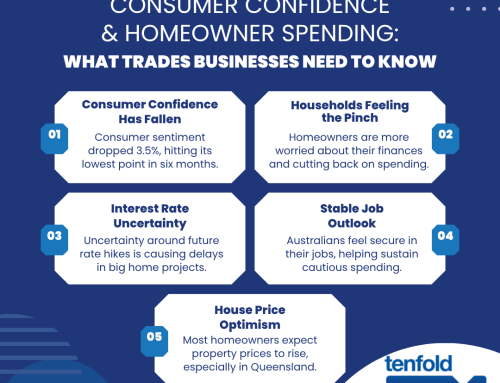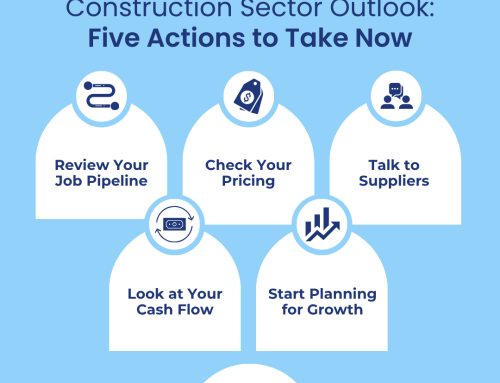Is Your Construction Business Built for the Next Decade of Housing Demand?
The Australian housing market is currently experiencing significant shifts, and builders who do not adapt risk falling behind. Detached houses are no longer the standard option, as medium-density housing is gaining increased prominence. Flats now make up 31% of newly constructed buildings, compared to just 16% of the existing housing stock. This evolution signifies a major change in the way Australians live, presenting a blend of challenges and opportunities for construction businesses.
For builders operating within the revenue range of $3 million to $10 million, the question is not solely about keeping up; it is about getting ahead. A construction business coach can provide valuable assistance in navigating these changes, ensuring that the review of your builder’s business model aligns effectively with current market demands. The future of home building requires strategic adjustments in quoting methods, project selection, and financial management.
The Shift Towards Medium-Density Housing
The Australian housing market is shifting as household sizes decline, now averaging 2.5 individuals compared to 2.6 in past decades. Fewer people per household means that more dwellings are needed to maintain population levels, driving demand for more compact and efficient homes. This demographic change challenges builders who traditionally focused on detached properties, as larger builds may no longer yield the same profit margins.
Builders who expand into medium-density projects such as townhouses and dual occupancies have the opportunity to capitalise on these changes. Medium-density projects often allow for more streamlined costs and faster project turnaround times. Shifting towards these builds involves rethinking quoting methods, design processes, and finance management strategies. Engaging with a construction business coach for a review of your builder business model may provide the essential insights needed to adapt successfully.
By embracing a diverse project portfolio, builders protect themselves against the shifting tides of housing demand in Australia. A proactive review of current practices, guided by expert advice from a builders business coach, can reveal opportunities to secure better jobs and new revenue streams. Ultimately, modernising traditional methods will help ensure a construction business is built for the next decade of housing demand.
How Medium-Density Impacts Your Business Model
Medium-density projects, such as townhouses and dual occupancies, significantly impact how you conduct business. These projects require tighter management practices and more precise quoting methods compared to traditional detached-home builds. With increased complexity in design and construction, builders’ business strategies must evolve to keep up with the demands of a changing market. Managing staged approvals and navigating shifting finance models become key considerations when assessing project viability and profitability.
In the realm of townhouses and dual occupancies, every stage of the process demands meticulous planning. Accurate quoting is not only about covering costs but also about ensuring that each project stage receives the appropriate investment and oversight. Builders must now consider a range of variables, from coordinating design specifics to obtaining permits in stages, and these challenges call for a more agile approach to management. In this context, detailed processes and refined calculations can mean the difference between a project that meets profit expectations and one that falls short.
Builders who continue to rely solely on traditional detached-home projects may miss lucrative opportunities currently available. The future of home building requires construction businesses to reassess their methods and explore new project avenues. Savvy builders are diversifying their project mix. Not only are volume builders, but also boutique and custom builders, integrating two-to-four-unit sites into their portfolios. This approach isn’t about taking on more work just for its own sake; it’s about securing better projects that offer sustainable profit margins and long-term stability.
A review of modern business models is essential in this changing landscape. A thorough analysis can uncover gaps in your current strategy and highlight areas for improvement. Engaging with a construction business coach or a builders business coach can provide the insights needed to refine your quoting techniques, management practices, and overall project strategy. By aligning your operations with the evolving market and the future of home building in Australia, you can position your business to benefit from the growing preference for medium-density developments. This strategic shift not only enhances operational efficiency but also supports the long-term success and resilience of your construction business.
Adapting Your Quoting, Design, and Permit Processes
Adapting your quoting, design, and permit processes can offer a significant competitive edge in today’s construction market. Accurate quoting is not just about crunching numbers; it reflects a thorough understanding of a project’s full scope, ensuring that every aspect of labour, material, and timeframe is accounted for. This precise approach helps protect profit margins and fosters invaluable client trust from the very beginning.
Design complexities have become a central focus as home designs evolve to meet modern lifestyles. Builders now face the challenge of integrating innovative, functional, and efficient layouts that cater to smaller household sizes while maximising available space. Streamlined design processes not only enhance project outcomes but also position your business favourably in a dynamic market that increasingly demands versatile, medium-density developments.
Navigating the maze of permit approvals completes this crucial trio of processes. Regulatory requirements can vary across local councils, and staying ahead necessitates establishing proactive systems to effectively manage changes. A business coach for the construction industry can offer valuable insights into optimising these areas, ensuring that your quoting, design, and permit procedures are efficient and finely tuned for the profitable challenges of the next decade.
Future-Proofing Your Construction Business
The best builders recognise that continuous improvement is the cornerstone of long-term success. Reviewing your business model is not just about reacting to current trends but proactively preparing for the next decade of housing demand in Australia. This involves staying ahead of shifts in market dynamics, comprehending evolving regulatory landscapes, and adapting operational procedures to accommodate changes in consumer expectations and technological advancements. Keeping an eye on future trends ensures your business remains agile and competitively positioned.
A construction coaching company can be an essential ally in your journey toward future-proofing your business. Our expertise in auditing business operations can uncover hidden inefficiencies and highlight key opportunities for improvement that might have otherwise been missed. With the support of a builders business coach, you can implement strategies that align with the evolving market, tailoring your quoting, design, and permit processes to address the complexities of modern home building. This comprehensive approach not only boosts profitability but also instils confidence in your workforce and clients, reinforcing your reputation as a forward-thinking builder.
As housing demand continues to evolve, driven by shifting demographics and urbanisation trends, your business must be ready to pivot and innovate. Embracing continuous improvement with strategic guidance is the key to maintaining a competitive edge in Australia’s dynamic market. To learn how you can prepare your construction business for the future and take full advantage of emerging opportunities, please contact us at Tenfold Coaching. We are here to help you achieve long-term success in today’s rapidly changing housing market.






